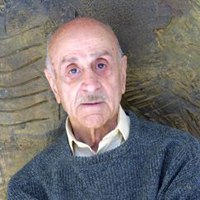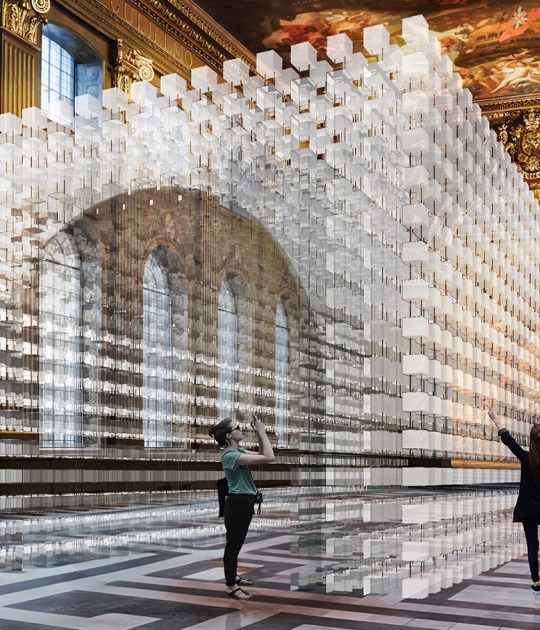Open House Madrid invites you to visit one of the most significant works of Miguel Fisac located along the Manzanares river, the Hydrographic Studies Center. In 1960 Miguel Fisac Serna was commissioned to design a new building to house two agencies until then separate, the Hydrographic Studies Center and the Hydraulics Laboratory. In March of that same year they began the first sketch of a project that ended three years later, and has become a benchmark of the Spanish architecture of the 60s.
The careful design of these 'vertebra-beams', named so by Fisac for its resemblance to the bony structures of the animals, that allow to save the 22 meters of the building
Fisac design poses a division of the building into two volumes that are connected only by a hall located on the first floor. A six-storey main building with the offices, meeting rooms and auditorium, and a second volume containing the models' storehouse and water tanks. The novelty proposed by Fisac goes beyond the structural design, the use of concrete as only building material contrasts with institutional granite buildings that were being built at that time. Fisac made of concrete a noble material, which is both the internal and external finishing of the building, taking special care of the wooden forms, whose streaks can be seen on the walls of the building.
The models' storehouse is probably the most interesting part, or at least remarkable, of the complex, a large open room, 80 x 22 meters, covered with beams that were originally formed by pieces of concrete joined together. The careful design of these 'vertebra-beams', named so by Fisac for its resemblance to the bony structures of the animals, that allow to save the 22 meters of the building, to have indirect natural light, needed for conducting tests, and also to evacuate the water from the roof cover, although in 1995 modifications were made on the roof because of some filtration and water accumulation problems. vertebra-beams were replaced by continuous prestressed concrete beams in order to avoid joints between elements, increasing at the same time the slope of the roof. The internal modulation of the beams was kept visually,in order to keep the original design of the interior space as much as possible.
During the construction of Fisac's project a future expansion of the building was already being planning, the extension was finally made in 1969 by architect José Antonio Torroja. This design had the support and collaboration of Fisac, but it has nothing to do with the spatial conception of his models' storehouse since Torroja uses a three-dimensional steel structure to create a larger space that connects with the models' storehouse in the southern part. This was the only extension made in a building since its construction, more than fifty years ago, and it continues with the use for which it was designed. However, the passage of time has taken its toll on the building and its facilities, which have been remedied, such as the beams of the door canopy after an accident with a truck or the mirrored windows set up to replace the original windows that were destroyed by a bomb nearby.
Miguel Fisac also took care of the design of the furniture of the offices and the conference rooms, complete with other pieces of avant-garde artists such as Mies van der Rohe, Harry Bertoia and Juan Ignacio Cardenas. The moldings of the ceiling and its lights, the wood paneling on the walls or the marble floor of the lobby, made up of parts of different sizes that have their own plan for proper placement are also details made by Fisac.
In the words of Miguel Fisac during his visit in 2003 to mark the 40th anniversary of the building, "The author of the project designed forty years ago is very excited to see how they are caring for this building, and this is something that an architect thanks to wholeheartedly".
CREDITS. DATA SHEET.-
Architects.- Original building.- Miguel Fisac Serna (1963). Extension.- Jose Antonio Torroja (1969).
Collaborators.- Calculist.- Jose Maria Pliego. Executor.- Ricardo Barredo.
Client.- Centre for Hydrographic Studies and Hydraulics Laboratory.
Area.- Modelos' storehouse.- 2000 sqm (80 x 22 m). Extension.- 6000 sqm.
Dates.- First sketches.- March 1960. Project.- November 1960. Inauguration.- July 1963. Extension.- 1969.
Location.- low Paseo Virgen del Puerto, 3, 28005, Madrid, Spain.
We would like to express our gratitude for the collaboration of Maria Isabel Berga Cano, of the Hydrographic Studies Center - CEDEX, for her help on the investigation of this article.

CENTRO DE ESTUDIOS HIDROGRÁFICOS / HYDROGRAPHIC STUDIES CENTER by MIGUEL FISAC SERNA.
Venue.- Paseo Bajo de la Virgen del Puerto, 3. Madrid.
Dates.- Thursday 15.00 to 16.00h an Friday, from 10.00 to 11.00h.
Registration.- Sold out.













































